Knee Arthroscopy for Patient Who Falls 15 Stairs
Meet Kelli.
Kelli was injured at work, she fell down a flight of 15 stairs. She injured her knee and had been suffering from excruciating pain since. She underwent a knee surgery performed by Edwin Haronian MD and Pain Management treatment with Jonathan Kohan MD. She has made enormous improvements under the care of Synapse Orthopedic Group and is back at Work.
Call us to schedule an appointment: (818) 788-2400
Locations in Pomona, Sherman Oaks, and Los Angeles
Knee arthroscopy is surgery that uses a tiny camera to look inside your knee. Small cuts are made to insert the camera and small surgical tools into your knee for the procedure.
Three different types of pain relief (anesthesia) may be used for knee arthroscopy surgery:
Local anesthesia. Your knee may be numbed with pain medicine. You may also be given medicines that relax you. You will stay awake.
Spinal anesthesia. This is also called regional anesthesia. The pain medicine is injected into a space in your spine. You will be awake but will not be able to feel anything below your waist.
General anesthesia. You will be asleep and pain-free.
Femoral nerve block. This is another type of regional anesthesia. The pain medicine is injected around the nerve in your groin. You will be asleep during the operation. This type of anesthesia will block out pain so that you need less general anesthesia.
A cuff-like device may be put around your thigh to help control bleeding during the procedure.
The surgeon will make two or three small cuts around your knee. Salt water (saline) will be pumped into your knee to inflate the knee.
A narrow tube with a tiny camera on the end will be inserted through one of the cuts. The camera is attached to a video monitor that lets the surgeon see inside the knee.
The surgeon may put other small surgery tools inside your knee through the other cuts. The surgeon will then fix or remove the problem in your knee.
At the end of your surgery, the saline will be drained from your knee. The surgeon will close your cuts with sutures (stitches) and cover them with a dressing. Many surgeons take pictures of the procedure from the video monitor, You may be able to view these pictures after the operation so that you can see what was done.
Arthroscopy may be recommended for these knee problems:
Torn meniscus. Meniscus is cartilage that cushions the space between the bones in the knee. Surgery is done to repair or remove it.
Torn or damaged anterior cruciate ligament (ACL) or posterior cruciate ligament (PCL). Torn or damaged collateral ligament
Swollen (inflamed) or damaged lining of the joint. This lining is called the synovium. Kneecap (patella) that is out of position (misalignment). Small pieces of broken cartilage in the knee joint
Removal of Baker's cyst. This is a swelling behind the knee that is filled with fluid. Sometimes the problem occurs when there is swelling and pain (inflammation) from other causes, like arthritis.
Repair of defect in cartilage. Some fractures of the bones of the knee.
Before the Procedure
Always tell your health care provider what medicines you are taking, even drugs, supplements, or herbs you bought without a prescription.
During the 2 weeks before your surgery:
You may be told to stop taking medicines that make it harder for your blood to clot. These include aspirin, ibuprofen (Advil, Motrin), naproxen (Naprosyn, Aleve), and other blood thinners.
Ask which medicines you should still take on the day of your surgery.
Tell your provider if you have been drinking a lot of alcohol (more than 1 or 2 drinks a day).
If you smoke, try to stop. Ask your provider for help. Smoking can slow down wound and bone healing. Always let your doctor know about any cold, flu, fever, herpes breakout, or other illness you have before your surgery.
On the day of your surgery:
You will most often be asked not to drink or eat anything for 6 to 12 hours before the procedure.
Take the medicines you been told you to take with a small sip of water.
You will be told when to arrive at the hospital.
After the Procedure:
You will have an ace bandage on your knee over the dressing. Most people go home the same day they have surgery. Your provider will give you exercises to do.
For more information please visit our website at: http://www.synapsedoctor.com
You can also follow our social media pages at:
http://www.facebook.com/synapsedoctor
http://www.instagram.com/synapsedoctor
http://www.twitter.com/synapsedoctor
-
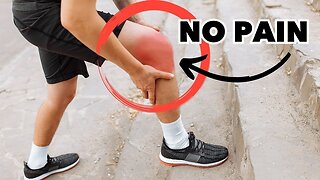 18:08
18:08
BobandBrad
11 months agoFast Fix For Knee Pain With Stairs Or Walking! 55 And Older
275 -
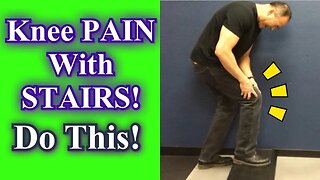 6:57
6:57
MoveWellLiveWell *Dr. Wil & Dr. K*
5 years agoKNEE PAIN WITH STAIRS?! DO THIS! | Dr Wil & Dr K
6 -
 6:08
6:08
BobandBrad
1 year agoNeed Knee Replacement? 5 Things We Learned From 1000 Patients
117 -
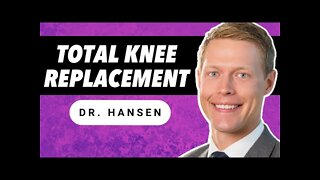 34:19
34:19
BobandBrad
2 years agoKnee Replacement? You Should Know This Before!
1.5K -
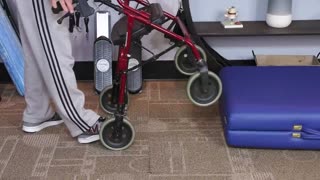 7:08
7:08
BobandBrad
10 months agoHow To Safely Use A Walker With A Seat (Avoid Falls)
294 -
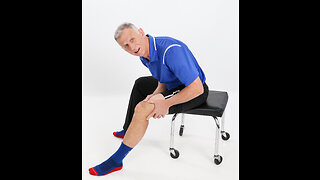 4:50
4:50
BobandBrad
8 months agoExercises for up & down stairs after Total Knee Replacement
267 -
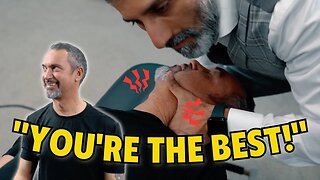 13:02
13:02
Nektalov Chiropractic & Wellness
1 year ago*FELL DOWN THE STAIRS*- MONTHS OF PAIN *HEALED* FROM FIRST VISIT💥🤯🍑| Dr. Boris Nektalov
38 -
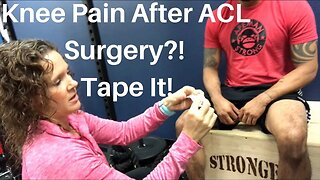 7:14
7:14
MoveWellLiveWell *Dr. Wil & Dr. K*
5 years agoKNEE PAIN AFTER ACL SURGERY?! TAPE IT! | Dr K & Dr Wil
6 -
 7:03
7:03
BobandBrad
2 years agoKnee Pain Or Injury - Should You See A Doctor?
65 -
 10:47
10:47
BobandBrad
2 years ago7 Mistakes People Make After Total Knee Replacement
64